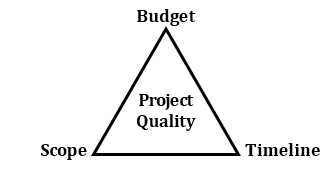We take 'Partner' Seriously
Which means we take your time seriously. We will reach out shortly after you submit this form.
Fixed Bid Projects: Mythic Fantasy or Achievable Reality?

Author: Bill Dwinell
Published: December 08, 2022
The phrase ‘fixed bid’ has a way of unsettling developers and marketers. To some, it conjures visions of endless change requests, disappointed client expectations, and limited margins. Like the proverbial dragon, many agencies would prefer to think that fixed bid projects don’t exist or if they do, are best left alone to avoid danger. Confronting such a beast might seem ‘unrealistic’ or ‘impossible’ and such agencies make efforts to dissuade or disqualify a prospective client’s request for fear of failure. Enter the ‘heroic’ agencies which see not only the challenge, but also the opportunity to provide predictable pricing, achievable expectations, and overall value. These latter agencies overcome such fear of failure to the benefit of themselves and their customers.

Fixed Bid vs Time & Materials
Fixed bid projects rely on setting and committing to a predetermined budget, timeline and scope of work, (scope), what we prefer to call the magical triangle. These three factors are agreed upon between the agency and the client at the outset of the project. Barring a specific need to change one of them, they are fixed until the project is completed. To change one means having to change each one to maintain the quality of the project, otherwise something has to give.

Opposing this approach is time and materials, (T&M), which leaves the three factors of the triangle unfixed, allowing each to change and impact the other throughout the course of the project. The agency and client agree to an hourly rate and a basic, high-level scope for the project allowing the project to get underway faster but without the controls necessary to manage budget, timeline, and scope.
As a simplified comparison of both approaches:
- Time & Materials advantages:
- Flexible budget, timeline, scope
- Capable of adapting to changing requirements
- SPEND ONLY WHAT YOU WANT, GET ONLY WHAT YOU PAY FOR
- Time & Materials disadvantages:
- Inability to define budget, timeline or scope in advance
- Potential to increase cost and/or timeline vs budget due to lack of controls for scope.
- Fixed Bid advantages:
- Fixed budget, timeline, scope
- Set expectations on project quality at delivery
- KNOW WHAT YOU WILL SPEND, KNOW WHAT YOU WILL GET
- Fixed Bid disadvantages:
- Defining project scope requires significant planning and effort prior to project start
- Changes to scope increases timeline and/or budget or reduces project quality
The “Solution”
When a project's requirements are properly researched, the scope, budget, and timeline are set accordingly. At that moment, the agency and client are aligned and in agreement on the cost and deliverables. This definition helps each party cooperate as a team, and as they say, “teamwork makes the dream work.” This alignment pays dividends from the largest scale sites or applications to a simple feature update. The teams know what to expect and when, as well as exactly how much it will cost. When budget is the constraining factor, this permits the team to decide which features are necessary up front and which may have to wait for a later phase and budget.
At Igility, we ensure project success through effective, disciplined efforts with each client. The time spent at the beginning of each project is intended to learn each client’s needs and wants as well as develop a budget through well established industry benchmarks. This enables us to deliver a thorough, detailed project plan. We also break down the effort into separate stages, including strategy, design, development, and maintenance. Each stage consists of a fixed bid around its own requirements, timeline and budget, managed against the project’s overall budget.
While priority is given to the client’s primary goals, we anticipate future needs of our clients. Effective planning not only creates the roadmap to define future features, it facilitates developing the architecture to efficiently develop those features as budget and timeline permit. Whether preemptively documented during planning or as a client change request mid-project, putting the extra effort into planning at the beginning helps drastically reduce the impact of change and provides for the long term vision of the finished project.
With years of experience providing fixed bid projects, we have overcome this mythical beast to deliver heroic victories time and again. We undertake the hero’s journey with every client, traveling the long road and supporting every step of the way. At Igility, we aren’t just a partner, we are an extension of the team. As a client, your success is our success, both today and tomorrow. Contact us to learn how Igility's proven fixed bid process can deliver on time and within budget for your organization.
